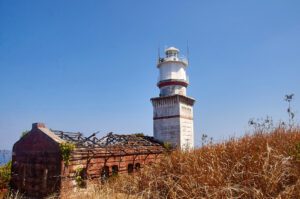
Capones Lighthouse: A Beacon of History and Scenic Beauty in Zambales
The Capones Lighthouse, also known as Faro de Punta Capones or Capones Island Lighthouse, stands proudly as a significant historic site situated along the coast
The Subic Spanish Gate, located in Olongapo, Zambales, stands as a remarkable testament to the Philippines’ colonial past. Originally serving as the entrance to the Spanish Naval Station, the gate now resides within today’s bustling Subic Bay Freeport Zone, formerly known as the Subic Naval Base. Positioned north on Sampson Road, just north of Dewey Avenue, the gate’s location emphasizes its strategic importance in safeguarding the bay against potential maritime threats and intrusions.

![Subic Spanish Gate Zambales2016-03-20 2016-03-20 [Group 0]-DSC_0006 Mar 20 2016 marianosayno_DSC_0010 Mar 20 2016 marianosayno-5 images_0000 marianosayno MarianoSayno](https://www.beautyofthephilippines.com/wp-content/uploads/2016/03/Subic-Spanish-Gate-Zambales2016-03-20-2016-03-20-Group-0-DSC_0006-Mar-20-2016-marianosayno_DSC_0010-Mar-20-2016-marianosayno-5-images_0000-marianosayno-MarianoSayno-768x572.jpg)


ABOVE: The Subic Spanish Gate, a resilient symbol of Subic Bay’s naval history, has endured through centuries of historical events, transitions of power, and shifts in ownership from Spanish to American and Filipino control, now standing as a cherished historical landmark inviting reflection on the region’s diverse and dynamic past.
ABOVE: The Subic Spanish Gate, a resilient symbol of Subic Bay’s naval history, has endured through centuries of historical events, transitions of power, and shifts in ownership from Spanish to American and Filipino control, now standing as a cherished historical landmark inviting reflection on the region’s diverse and dynamic past.
The significance of Subic Bay dates back to 1542 when Spanish conquistador Juan de Salcedo, the grandson of Miguel Lopez de Legaspi, discovered the bay. During a visit to Zambales to collect tributes for the Spanish Crown from the local natives, Salcedo recognized the strategic potential of Subic Bay as a naval base. The official establishment of the town of Subic, however, did not occur until 1607, with the involvement of Father Rodrigo de San Miguel.

ABOVE: A low-angle panoramic shot captures the majestic Subic Spanish Gate, embodying its historical significance amidst the scenic Subic Bay Freeport Zone in Olongapo, Zambales.
ABOVE: A low-angle panoramic shot captures the majestic Subic Spanish Gate, embodying its historical significance amidst the scenic Subic Bay Freeport Zone in Olongapo, Zambales.
In 1762, the Spanish government recognized the value of Subic Bay after the British defeated the Spaniards and occupied the Cavite port during the Seven Years’ War in The Battle of Manila. Subsequently, in 1868, a military expedition confirmed Subic’s suitability for a naval base. By 1884, an official authorization was granted following King Alfonso XII of Spain’s declaration of Subic Bay as a naval port. On March 8, 1885, the Spanish Naval Commission sanctioned the construction of the “Arsenal de Olongapo,” comprising a gate, watchtower, several buildings, and a railway connecting the hills. The construction of the Subic Spanish Gate, an integral component of the arsenal, commenced in the same year and required almost three years of arduous labor, utilizing Filipino forced labor.


ABOVE: Despite the ravages of time and wars, the Subic Spanish Gate endures as a poignant reminder of its glorious past, captured in detailed shots showcasing its historical resilience amidst ruins.
ABOVE: Despite the ravages of time and wars, the Subic Spanish Gate endures as a poignant reminder of its glorious past, captured in detailed shots showcasing its historical resilience amidst ruins.
The Subic Spanish Gate is an excellent example of Spanish colonial military architecture. Constructed using local materials, the gate is characterized by its robust stone masonry, which reflects the Spanish emphasis on durability and defense. The structure is designed with a fortified archway, supported by thick, solid walls that would have provided substantial protection. The gate’s rectangular opening, flanked by sturdy bastions, reveals its original purpose as a defensive mechanism. Adorning the gate are several elements typical of Spanish colonial architecture. The use of lime plaster and the detailed stonework highlight the craftsmanship involved in its construction. The gate’s simple yet imposing design was intended to project authority and instill a sense of security among the settlers and military personnel.


ABOVE: Through the guard holes, one can glimpse cannons, offering a unique perspective on historical defenses.
ABOVE: Through the guard holes, one can glimpse cannons, offering a unique perspective on historical defenses.
The Spanish Gate in Olongapo was part of a larger network of fortifications strategically placed across the archipelago to protect Spanish interests. The fortifications, including walls, gates, and watchtowers, were crucial in maintaining control over the trade routes and securing the Spanish colonial presence. The Subic Spanish Gate played a vital role in these defensive measures, overseeing the entrance to the bay and controlling access to the fortified area.



ABOVE: The Subic Spanish Gate was designated a historical landmark by the National Historical Commission of the Philippines on November 26, 2013, with a marker inscribed “Himpilang Pandagat ng Look ng Subic” (“Naval Station of Subic Bay”).
ABOVE: The Subic Spanish Gate was designated a historical landmark by the National Historical Commission of the Philippines on November 26, 2013, with a marker inscribed “Himpilang Pandagat ng Look ng Subic” (“Naval Station of Subic Bay”).
Upon completion of the Spanish naval base, it was utilized by the Spanish Navy to provide repairs, supplies, ammunition, and medical support for their ships. The post was under the command of the “segunda commandancia” of the base in Cavite. The rail lines situated in front of the gate served to connect the naval base to the broader Zambales region. This railway, which traversed what is now Fendler Street, established a crucial link within the area, facilitating the movement of goods and personnel essential for the naval base’s operation.



ABOVE: Multiple photos capture the cannon positioned alongside the historic Subic Spanish Gate.
ABOVE: Multiple photos capture the cannon positioned alongside the historic Subic Spanish Gate.
Throughout its history, the gate witnessed the transition of control from Spanish to American and finally to Filipino sovereignty. The Spanish retained control of this base until June of 1898, when they were ousted by opposing forces in battle. Subsequently, in September of 1899, the U.S. Navy occupied the area. However, the structure reverted to Filipino government ownership when the U.S. failed to renew the Military Bases Agreement with the Philippine government in 1992. Each phase brought new dimensions to its historical narrative, underscoring its role as a silent witness to the shifting tides of history.

RELATED STORIES

The Capones Lighthouse, also known as Faro de Punta Capones or Capones Island Lighthouse, stands proudly as a significant historic site situated along the coast

There is no way anyone can ignore the beauty of Pamatawan River if they are traveling in the area of the coast of Pundaquit in

Pundakit, or the Municipality of Pundaquit of San Antonio, in Zambales Province, is a fishing village that boasts a multilingual local population (Ilocano, Zambal, Tagalog)

Near Pundaquit in Zambales, two islands are calling to be explored. Camara Island, the closer one, sits just off Pundaquit’s shores and is easily reachable.
Declared a historical landmark, the Subic Spanish Gate not only preserves the memory of the past but also invites visitors to reflect on the dynamic and diverse history that has shaped the region. On November 26, 2013, the National Historical Commission of the Philippines designated the Subic Spanish Gate as a historical landmark, affixing a marker bearing the inscription “Himpilang Pandagat ng Look ng Subic” (“Naval Station of Subic Bay”). As the oldest remaining structure in Olongapo, it stands as a well-preserved historical site, offering a glimpse into the architectural and military strategies of the Spanish colonial era. Despite the passage of time and the changes in the surrounding environment, the gate remains a symbol of the region’s rich history. Efforts to preserve and maintain the site are crucial in ensuring that future generations can appreciate and learn from this historical landmark.


ABOVE: A long-angle shot captures the majestic arch of the Subic Spanish Gate, embodying centuries of history and enduring beauty.
ABOVE: A long-angle shot captures the majestic arch of the Subic Spanish Gate, embodying centuries of history and enduring beauty.
The Subic Spanish Gate is now a popular attraction for history enthusiasts, tourists, and locals alike. Its strategic location within the Subic Bay Freeport Zone makes it easily accessible, allowing visitors to explore and reflect on its historical significance. The gate serves as a reminder of the Philippines’ colonial past and the enduring legacy of Spanish influence, as well as the broader historical transitions that have shaped the region.


ABOVE: A wide-angle shot captures the Subic Spanish Gate prominently from the roadside, revealing its ancient architecture against the backdrop of Subic Bay’s serene landscape.
ABOVE: A wide-angle shot captures the Subic Spanish Gate prominently from the roadside, revealing its ancient architecture against the backdrop of Subic Bay’s serene landscape.
I’m looking forward to the stories and images leaving a lasting positive impression on you, just as they have on me. Stay connected with us on social media for a weekly exploration of travel assignments and breathtaking visuals. Our focus is on championing local tourism, showcasing small businesses, and honoring the magnificence of the Philippines through the content we curate. Join us in spreading the word by clicking the ‘share’ buttons below. Your support means the world to us.
EXPLORE MORE about
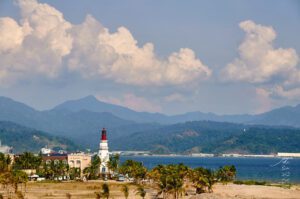
The Subic Lighthouse Marina Resort, constructed in 2006, exudes a distinctive nautical charm. The iconic lighthouse fulfills its role of guiding ships and boats to
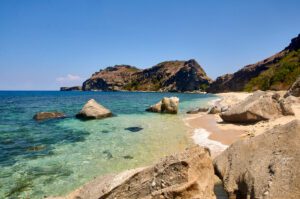
Capones Island forms part of a trio alongside Camara Island and an attached islet. Situated nearly four kilometers off the coast of Pundaquit in San
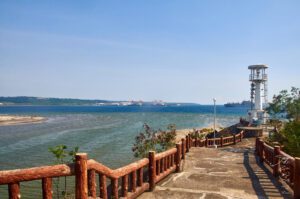
In the past, the Olongapo’s Subic Lighthouse, also known as the Subic Old Light Parola, served as a guiding light for ships, predating the establishment

The Capones Lighthouse, also known as Faro de Punta Capones or Capones Island Lighthouse, stands proudly as a significant historic site situated along the coast

Near Pundaquit in Zambales, two islands are calling to be explored. Camara Island, the closer one, sits just off Pundaquit’s shores and is easily reachable.

There is no way anyone can ignore the beauty of Pamatawan River if they are traveling in the area of the coast of Pundaquit in

Pundakit, or the Municipality of Pundaquit of San Antonio, in Zambales Province, is a fishing village that boasts a multilingual local population (Ilocano, Zambal, Tagalog)
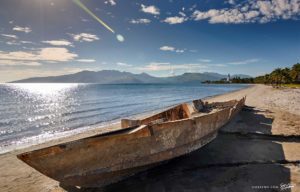
Subic bay is well known for its collection of shipwrecks from the past, as well as being visited frequently by the American Navy for military
BROWSE BY CATEGORIES